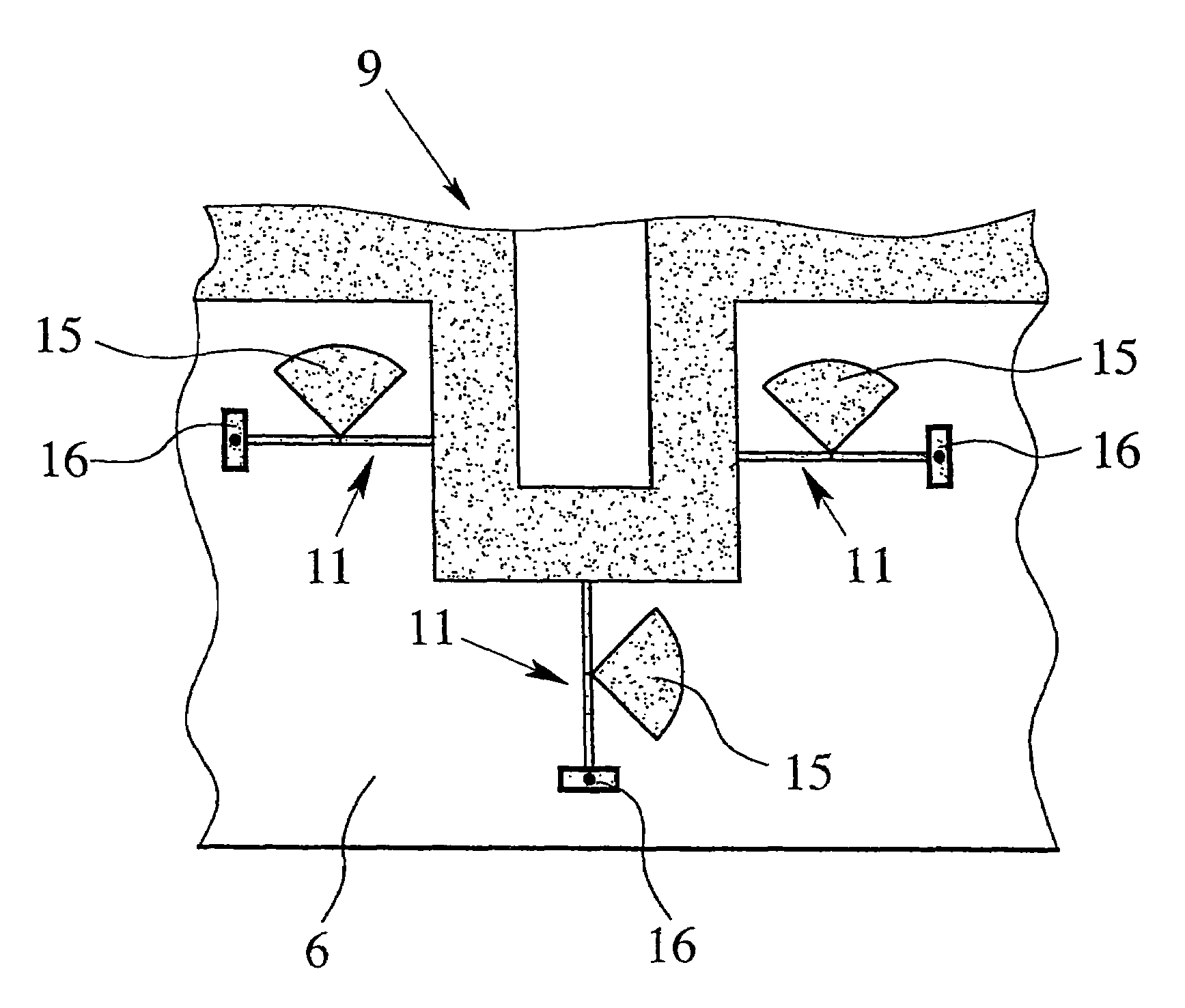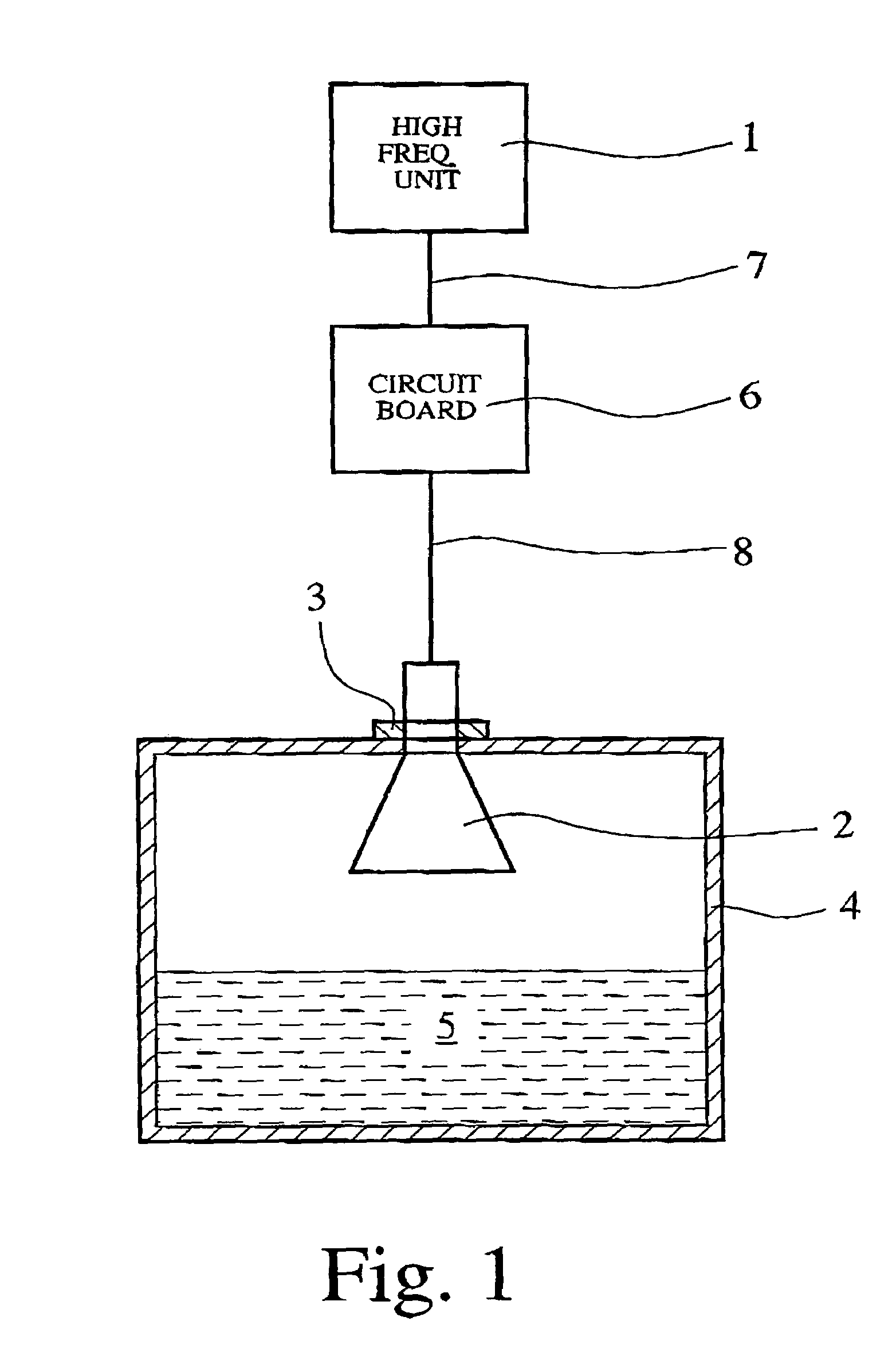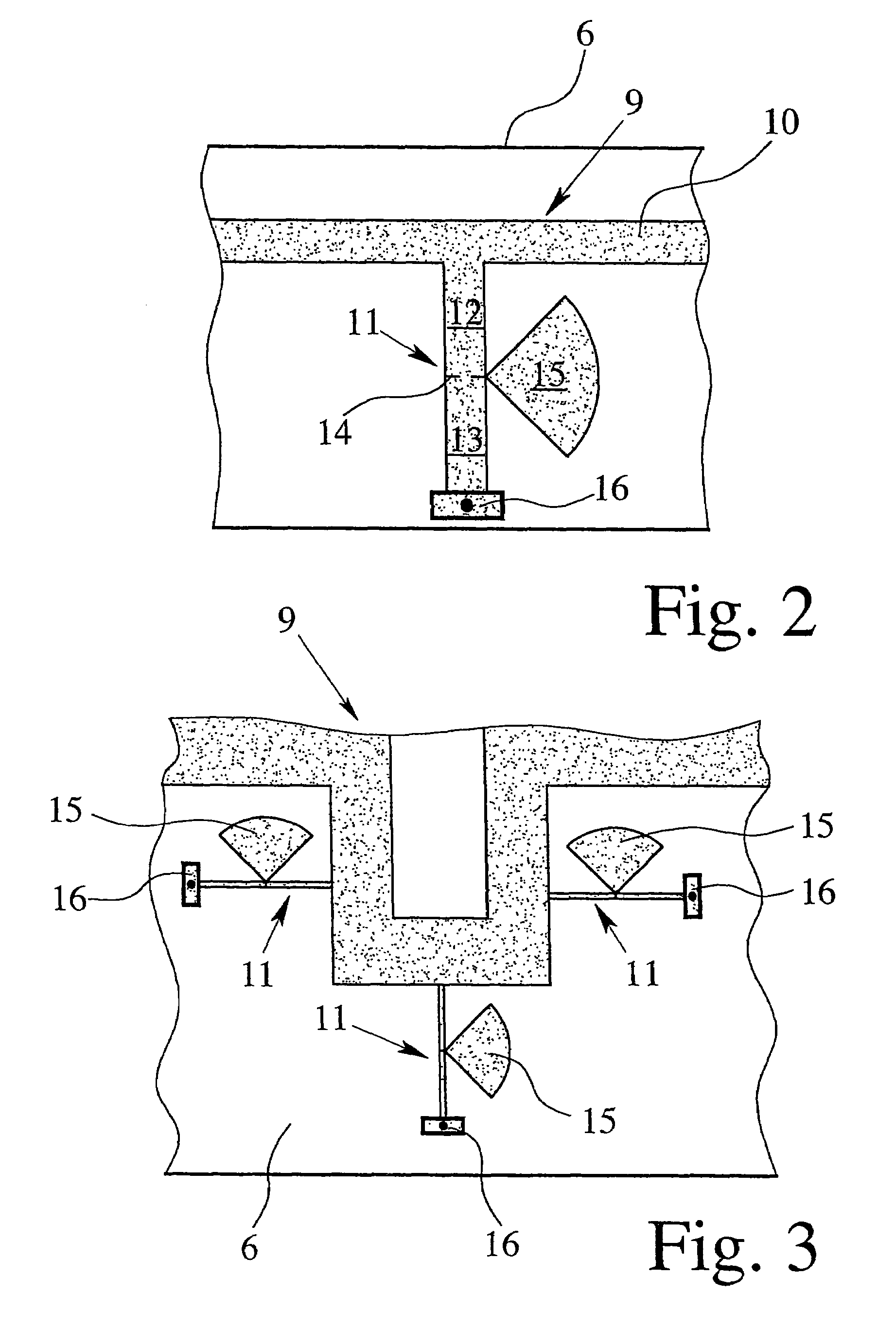Radar fill-level sensing device
a sensing device and radar technology, applied in the direction of engine lubrication, liquid/fluent solid measurement, reradiation, etc., can solve the problems of reducing the reproducibility of the process, affecting the effect of the process, and unable to render the ignition of an explodible gas mixtur
- Summary
- Abstract
- Description
- Claims
- Application Information
AI Technical Summary
Benefits of technology
Problems solved by technology
Method used
Image
Examples
Embodiment Construction
[0026]The radar fill-level sensing device according to a preferred embodiment, shown in FIG. 1, encompasses a high-frequency unit 1 serving to generate and process radar signals of a predefined frequency, typically on the order of several GHz which corresponds to wavelengths of several centimeters. The antenna 2 serving to transmit and receive radar signals is a horn antenna, although a rod antenna would be equally suitable.
[0027]By way of a flange mount or screw connection 3, the antenna 2 is positioned in a container 4 that holds a substance 5 whose fill level is to be determined. Interpositioned between the high-frequency unit 1 and the antenna 2 is a circuit board 6 that connects to the high-frequency unit 1 via a lead 7 and to the antenna 2 via a lead 8. FIGS. 2 and 3 show details of a possible configuration of the circuit board 6.
[0028]FIG. 2 shows part of the configuration of the board 6 according to a first preferred embodiment of the invention. As can be seen in FIG. 2, one...
PUM
 Login to View More
Login to View More Abstract
Description
Claims
Application Information
 Login to View More
Login to View More - R&D
- Intellectual Property
- Life Sciences
- Materials
- Tech Scout
- Unparalleled Data Quality
- Higher Quality Content
- 60% Fewer Hallucinations
Browse by: Latest US Patents, China's latest patents, Technical Efficacy Thesaurus, Application Domain, Technology Topic, Popular Technical Reports.
© 2025 PatSnap. All rights reserved.Legal|Privacy policy|Modern Slavery Act Transparency Statement|Sitemap|About US| Contact US: help@patsnap.com



